Where to go instead of the big US parks this summer
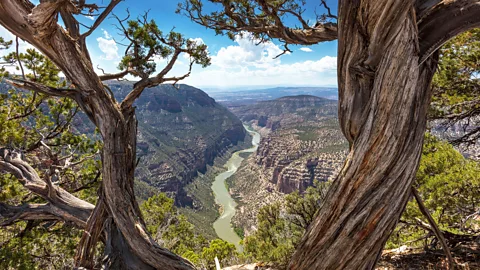 Alamy
AlamyThere are more than 400 sites in the US National Park System. Here's why it's time to skip the most-visited top 10 and seek out quieter, equally spectacular ground.
Winding through one of the wildest corners of Colorado, 210,000-acres deep in Dinosaur National Monument, I found myself balancing sideways on the crest of the biggest wave in the river – somehow staying upright through the whirling Class IV rapids. That week, I paddled 71 miles down the Yampa River, Colorado's last free-flowing river, camping beneath towering red-and-orange striped canyons etched by ancient peoples. The experience left me with something rare: space to breathe and trust in the river to take its course.
Unlike marquee parks that strain under the pressure of mass tourism, Dinosaur has quietly struck a balance between visitation and protection. The original head of the Sierra Club, David Brower, saw its value back in the 1950s when he fought to stop a proposed dam on the Yampa. Without him, many of these canyons would now be underwater.
"The riparian zone on the Yampa River is the most natural stretch of river in Colorado," says Tom Kleinschnitz, director of Visit Moffat County. "Preservation of this resource is crucial for the natural habitat, and it is one of the last natural river sections that visitors can observe, enjoy and play in."
Rethinking how (and where) we explore
From Acadia's rocky coast to Yosemite's soaring peaks, the US has no shortage of iconic national parks. But visitation numbers continue to climb, often outpacing infrastructure and threatening the very environments they showcase.
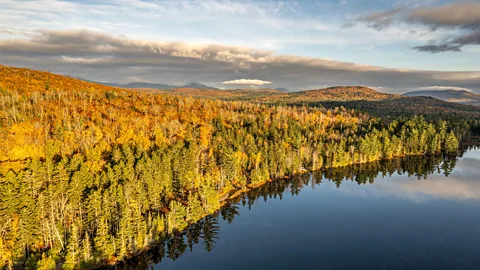 Alamy
AlamyTo protect these wild places – especially as US national parks, forests and wildlife habitats are under threat of cuts and understaffing – long-time nonprofit partner of the National Park Service, Western National Parks has launched new itineraries spotlighting 72 lesser-known US parks and monuments.
"Our lesser-known parks are truly hidden gems," says Marie Buck, the association's president and CEO.
"They often offer a more intimate experience and an opportunity to understand the under-told stories that have shaped the nation. And they do all this often with fewer crowds." Since its founding, the nonprofit has contributed $162m to responsible visitation of US public lands.
Others are also encouraging off-the-beaten-path exploration. Former park ranger Ashli Nudd curates personalised national park itineraries; while Outdoorable, a company formed in the wake of potential NPS layoffs, is hiring former rangers to create custom trip itineraries and offer traveller tips. Even adventure travel company Intrepid Travel recently launched Active-ism tours through Zion and the Grand Canyon – with routes designed to avoid high-traffic areas and proceeds going to the National Parks Conservation Association and the Grand Canyon Conservancy.
Here are four underrated spots that prove you don't need to sacrifice beauty, biodiversity or a sense of wonder to travel responsibly this summer.
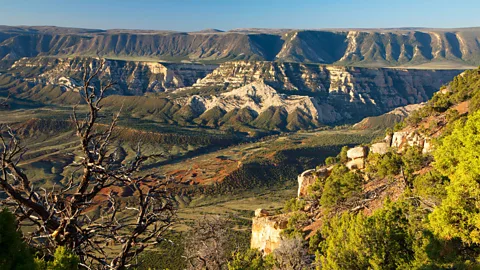 Alamy
AlamyDinosaur National Monument, Colorado and Utah
This rugged desert landscape spans 210,000 acres across Colorado and Utah, blanketed with of purple park rockcress and rich with prehistoric fossils – including 1,500 dinosaur specimens from the 23 species unearthed here since 1909.
The findings, some of the most significant in the field, transformed paleontology – with the earliest-found bones even reaching the living room of Scottish industrialist and philanthropist Andrew Carnegie, who helped secure national monument status in 1915.
Today, visitors can raft between spectacular towering canyon cliffs under certified International Dark Skies. The Yampa River remains one of the country's last undammed rivers and among the hardest river rafting permits to obtain, while the connecting Green River offers more accessible rafting routes, with stops for day hikes to waterfalls and ancient rock carvings. If rafting isn't for you, drive through canyon country to Echo Park to marvel at some of the monument's most dramatic scenery. Don't leave without seeing the wild horses grazing at nearby Sand Wash Basin and the largest wild mustang sanctuary in the US, the new Wild Horse Refuge, just outside the park.
Isle Royale National Park, Michigan
Accessible only by boat or seaplane, Isle Royale is one of the US's least-visited national parks – and one of its most peaceful. Located 56 miles from Michigan's Keweenaw Peninsula, the archipelago of 450 islands floats in the cool expanse of Lake Superior and is only open from mid-April through October each year.
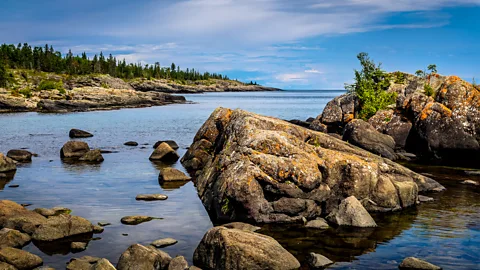 Getty Images
Getty ImagesTo get here, catch the ferry from Copper Head or Grand Portage, Michigan – your luggage will be ferried by wheeled carts to the lodges and campsites. There are no cars allowed on this Unesco-designated wilderness, so be prepared to explore by foot, canoe or kayak (rentals available at the Rock Harbor Marina and Lodge).
On Isle Royale, one of the world's largest lake islands, see where native Americans extracted copper to hand shape tools, weapons and ornaments 8,000 years ago. Then hike the island's trails to see moose and beaver and to find hidden fishing spots, like the Indian Portage Trail on Lake Richie.
Katahdin Woods and Waters National Monument, Maine
On your next New England trip, skip the crowds at Acadia National Park and head inland to Katahdin Woods and Waters National Monument instead. In the towering shadow of the state's highest peak, Mt Katahdin, lies a network of rivers and streams that once moved logs – Maine's primary heritage industry – from the woods to the mills. The mountaintop, which Henry David Thoreau called "vast, titanic, inhuman" marks the end of the world's longest hiking-only footpath, the Appalachian Trail.
Four more hidden gems to explore:
Each offers a chance to give back to protected land that need your attention more than ever.
- Wupatki National Monument, Arizona – a cultural marvel of Ancestral Puebloan architecture.
- Great Basin National Park, Nevada – grants access to a sprawling underground cave system.
- Dry Tortugas National Park, Florida — for snorkelling with sea turtles under a historic fort.
- Kenai Fjords National Park, Alaska — the tidewater glacier habitat of orcas and breaching humpback whales.
The monument was established in 2016 following an 87,500-acre land donation by environmentalist and Burt's Bees co-founder Roxanne Quimby. Visitors can explore the 11,000-year-old land and waterways of Maine's native Wabanaki people, who relied on the woods and waterways for sustenance, transportation and cultural practices. There's also cross-country skiing, snowshoe hiking, biking and fishing in deep river valleys. Watch out for moose (Maine has the most moose of any state except Alaska) and embrace the rustic solitude at one of the park's campgrounds or cabins.
As night falls, this International Dark SkySanctuary offers pristine stargazing at Katahdin Loop Road Overlook and Kimball Deadwater.
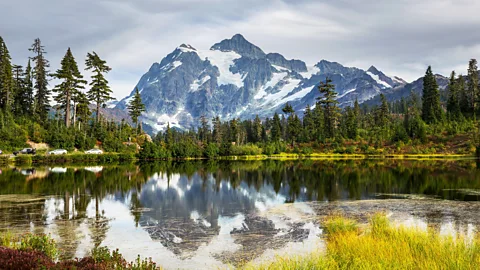 Alamy
AlamyNorth Cascades National Park, Washington
Just 2.5 hours from Seattle, North Cascades offers soaring mountains, alpine lakes and more than 300 glaciers on half a million acres of wilderness – yet receives just 1% of the visitors to nearby Olympic National Park.
While spring brings roaring waterfalls after the snowmelt, summer fills trails with vibrant lupine, paintbrush, columbine and glacier lilies. Adventurous travellers can paddle pristine lakes or hike through wildflower-filled meadows on the Maple Pass Loop. For a more challenging trek, the Cascade Pass and Sahale Arm trail provides breathtaking vistas of glaciers and rugged peaks. If you prefer a scenic drive, the North Cascades Highway (State Route 20), winds through the park offering dramatic views and quiet picnic spots.
At night, this stargazer's paradise offers astrophotography classes under some of Washington's darkest skies. Camp riverside or stay in a restful lakefront cabin at North Cascades Lodge at Stehekin.
--
If you liked this story, sign up for The Essential List newsletter – a handpicked selection of features, videos and can't-miss news, delivered to your inbox twice a week.
